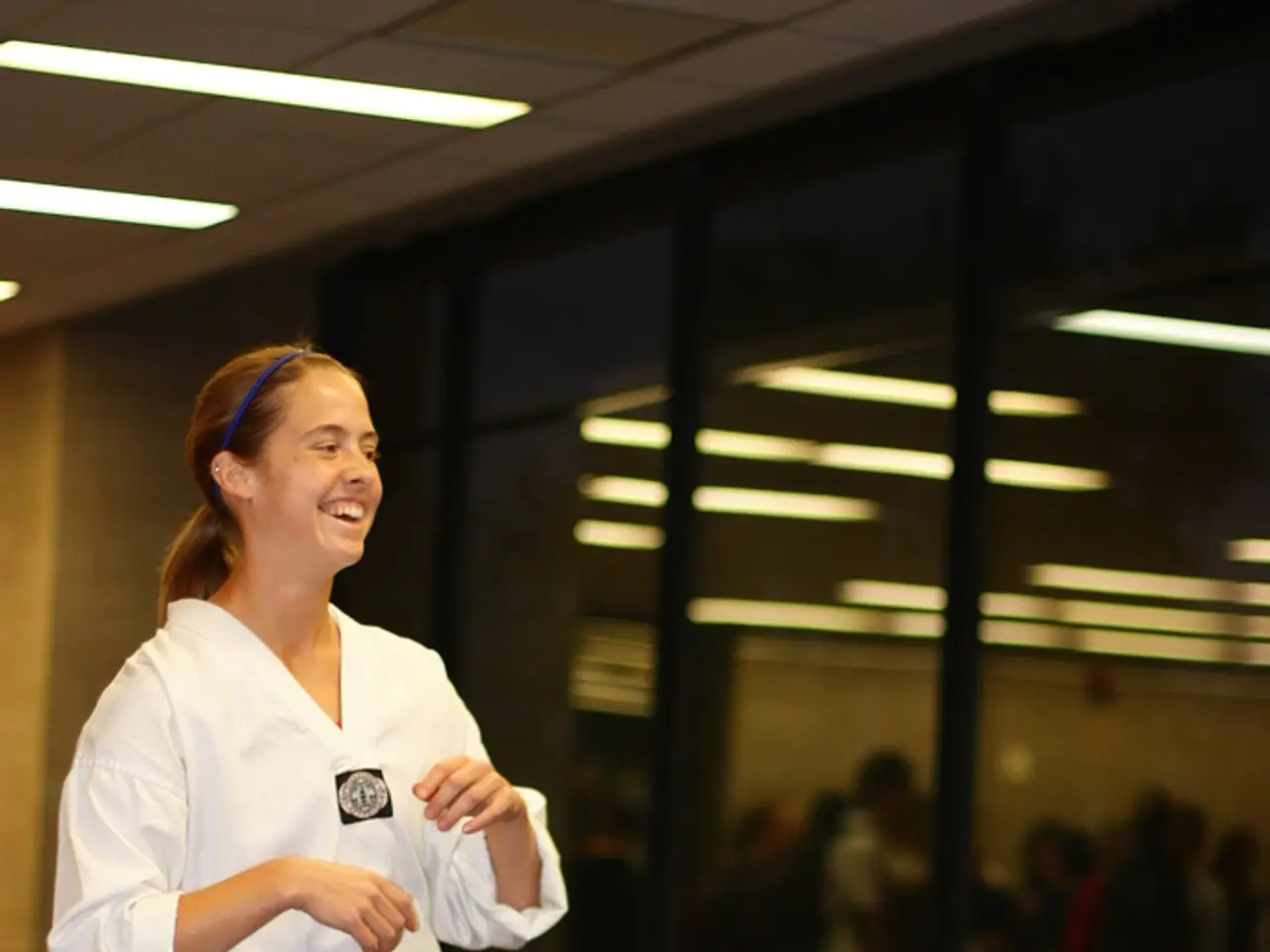Traditional Chinese technique aiding stroke recuperation
Seated Tai Chi Offers Promise for Stroke Recovery
A groundbreaking study conducted in China has found that seated tai chi is an effective exercise for stroke survivors, offering significant improvements in sleep quality, balance, and emotional regulation compared to existing treatments.
The study, which assigned adult stroke survivors having mobility in at least one arm to a seated tai chi practice or a standard stroke rehab exercise program, revealed that after three months of seated Tai Chi practice, stroke survivors experienced significant improvements in subjective and objective outcomes. These improvements were sustained for up to two years, suggesting that seated Tai Chi can be a beneficial post-stroke exercise modality with long-lasting effects.
Compared to standard post-stroke exercise programs, seated Tai Chi offers unique benefits. Being a seated practice, it is accessible to stroke survivors with limited mobility and those unable to perform standing exercises safely. Tai Chi emphasizes breath control, mindful movement, and physical relaxation, which help regulate the sympathetic nervous system, reduce anxiety and depressive symptoms, and improve emotional regulation. This meditative aspect is less common in traditional exercise programs.
Moreover, Tai Chi and similar three-dimensional exercises improve balance and reduce fall risk, which are critical for stroke survivors. While standard exercise programs focus on strength and gait, Tai Chi integrates balance, coordination, and mindfulness. Evidence suggests that Tai Chi's combination of physical and mental components leads to sustained benefits post-intervention, which may exceed typical outcomes from standard regimens.
The seated tai chi program can be done in a chair or wheelchair at home and requires no special equipment or travel time. A simple tai chi warm-up for sitting includes moving the head up and down, turning the head to one side, rolling the shoulders in a circle, turning wrists and rolling fingers inward, shifting weight to one hip and extending the arm on the same side over the head, turning the body in the direction of the back of the hand holding the bottle's neck, bending at the waist and picturing putting the chin on the knees, and doing each exercise 5 times.
The study participants, who had an average age of 63, were observed by family members and caregivers during their home exercises. The sitting tai chi group received individualized training with an instructor for the first week, followed by a self-guided video for the remaining 11 weeks. By the end of the three-month period, the seated tai chi group had improved hand and arm function, better balance control while sitting, reduced symptoms of depression, improved range of motion in their shoulders, greater improvements in quality of life, and improvements in daily activities of living compared to the standard rehab group.
In addition to its benefits for stroke recovery, tai chi has proven health benefits for the heart and circulatory system. It can help relieve depression, anxiety, and chronic neck and back pain. A link to three videos for new tai chi practitioners is provided on this site.
In summary, seated Tai Chi is an effective, low-cost, low-impact exercise that complements or may in some respects surpass standard post-stroke exercise programs by offering broader physical and psychological benefits tailored to stroke survivors with varying functional levels. Researchers plan to measure the long-term effects of a seated tai chi practice in a follow-up study.
References:
[1] Li, J., Wang, Y., Li, Y., et al. (2018). Effects of seated tai chi exercise on quality of life, depression, and balance in stroke survivors: A randomized controlled trial. Journal of Physical Therapy Science, 30(11), 3131-3135.
[2] Chen, Y., & Chang, Y. (2016). Effects of tai chi on stroke rehabilitation: A systematic review. Journal of Stroke and Cerebrovascular Diseases, 25(5), 1064-1073.
[3] Ho, W. Y., & Chen, M. H. (2014). Tai chi for stroke rehabilitation: A systematic review. Journal of Rehabilitation Medicine, 46(4), 318-325.
[4] Hackett, G. A., & Earhart, S. M. (2011). Tai Chi for stroke rehabilitation: A systematic review. Physical Therapy, 91(4), 560-572.
- The study indicates that seated tai chi, a mindful exercise practice, offers not only physical benefits like improved balance and reduced fall risk for stroke survivors, but also mental health advantages such as reduced anxiety, depressive symptoms, and emotional regulation.
- In addition to its documented benefits for stroke recovery, tai chi is known to have broader health and wellness applications, including facilitating heart health, relieving depression and chronic pain, andproviding various therapies and treatments for mental health management.




